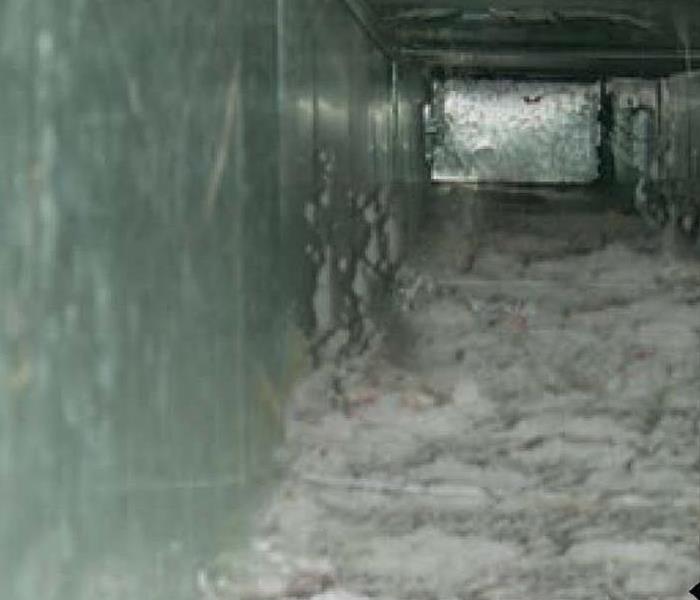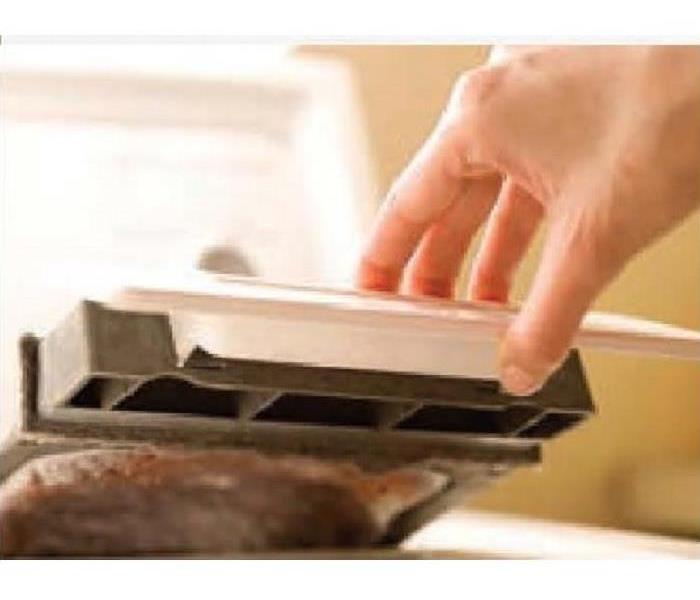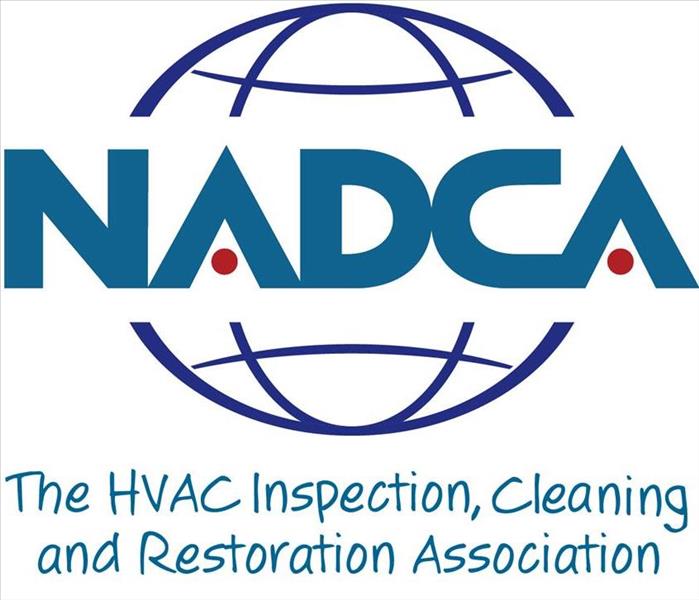Archived Building Services Blog Posts
May Is National Building Safety Month
5/11/2017 (Permalink)
Building Safety Month—in its 37th year—is an initiative of the International Code Council (ICC) and their 57,000 members across the world, as well as their partners in building construction and design, and the safety community. Building Safety Month is an opportunity to educate insurance and commercial property professionals, as well as the general public, on “what it takes to create safe, resilient, affordable, and energy-efficient homes and buildings,” according to the ICC website.
The theme for 2017 is Code Officials— Partners in Community Safety and Economic Growth and highlights managing disasters, specifically natural disasters, in week three of this year’s campaign. Some of the topics and tips shared throughout the month include Disaster Safety and Mitigation, as well as Fire Safety and Awareness. The general public may not be aware how codes and code officials “improve and protect the places where we live, learn, work, worship, and play,” and this month can certainly improve that awareness!
IMPORTANT TIPS FROM THE ICC Disaster Safety & Mitigation n
*If you live in a high wind or hurricane prone area and do not have tested and code-approved shutters for protection from windborne debris, consider temporarily protecting your doors and windows by mounting exterior grade, 7/16" minimum thickness plywood and fastening it into place. Visit www.flash.org for detailed instructions on how to use plywood for emergency board-up.
* Consider building or retrofitting to create a tornado-safe room in your home. Follow ICC/NSSA 500 Standard for detailed construction information and to ensure you achieve the highest level of protection for your family.
* In wildfire prone areas, remove fine (dead grass, leaves, etc.) and coarse fuels (dead twigs, branches, etc.) within 30 feet of a building to create a survivable space in case of wildfire. Be sure to remove dry leaf and pine litter from roofs, rain gutters, decks, and walkways. Follow ICC’s International Wildland-Urban Interface Code® for detailed requirements.
*Flooded roads could have significant damage hidden by floodwaters. Never drive through floodwaters or on flooded roads. Do not attempt to cross a flowing stream. It takes only six inches of fast flowing water to sweep you off your feet and two feet of water to move an SUV-sized vehicle.
Source: iccsafe.org
Do You Have Dirty Ducts? Improve your indoor air quality with duct cleaning
4/11/2017 (Permalink)
 Over time, different contaminants or foreign objects can enter and collect in your air ducts that may diminish the indoor air quality of your systems
Over time, different contaminants or foreign objects can enter and collect in your air ducts that may diminish the indoor air quality of your systems
Did you know your ventilation system is often the biggest culprit in poor indoor air quality? Inspecting the ductwork in your facility or home should be a high priority. In most cases, the HVAC system has been operating for some time without much attention. Dirty ducts can circulate odors, contaminants such as mold, and irritating dust throughout your building or home.
A routine part of your local SERVPRO® Franchise Professional’s service is inspecting the heating, ventilation, and air conditioning unit (HVAC). Keeping the HVAC and ductwork clean can potentially extend the life-span of the equipment by allowing it to operate at peak condition, which may help save you money. Duct cleaning may not always be necessary. SERVPRO® Franchise Professionals will inspect your HVAC system and ductwork and make recommendations about the best way to address any indoor air quality concerns. This inspection can help save you money and provide peace of mind on the health of your HVAC system and ductwork.
In some circumstances, such as after a fire, smoke, or suspected mold growth, duct cleaning becomes an essential part of the cleanup process. In these cases, your SERVPRO® Franchise Professional can often restore the HVAC system and ductwork to pre-damage condition.
If you have a fuel-burning furnace, stove, or fireplace, the U.S. Environmental Protection Agency (EPA) recommends they be inspected for proper functioning and be serviced before each heating season to protect against carbon monoxide poisoning.
The SERVPRO® Duct Cleaning System is proven and cost-efficient. Unlike the majority of duct cleaning services, your SERVPRO® Franchise Professional uses a portable ventilation and air duct cleaning system to examine ductwork and make a clean sweep, removing years of dust and grime.
- The process begins by using patented equipment, including a roto-scraper, which automatically adapts to the duct’s shape and diameter while traveling through the duct, removing debris and filth before vacuuming begins.
- Next, a powerful push-pull air delivery and collection system transfers the debris from the ducting to a 16-gallon container.n Air is filtered through a HEPA filtration system, removing 99.97 percent of the particles in the airstream. HEPA filters capture debris and keep the indoor environment clean.
- As an optional process, a sealant or coating product may be sprayed to address odor or microbial concerns.
- Filters will either be cleaned or replaced to remove odor and dirt.
For more information on duct cleaning, or to schedule an appointment, contact us today, 973-994-1640
The Importance of Cleaning Dryer Vents
4/11/2017 (Permalink)
 Fire Prevention
Fire Prevention
According to FEMA, failure to clean home dryers causes 34% of home dryer fires. Home dryer fires cause $35 million in property loss and can even cause injury or death.
To reduce the risk of these fires happening in your or your insured’s home or business, SERVPRO® can help clean dryer vents and ducts that may have lint buildup.
Other tips for keeping your dryer vents clean from the National Fire Protection Agency include cleaning the lint filter before and after each load, and making sure the outdoor vent flap will open and is not restricted by snow, a bird’s nest, or other potential obstacles.
For more information on cleaning dryer vents contact us at 973-994-1640
Benefits of Air Duct Cleaning
5/17/2016 (Permalink)
 SERVPRO of Western Essex County is a NADCA-Certified Company
SERVPRO of Western Essex County is a NADCA-Certified Company
Top Benefits of HVAC Cleaning
NADCA’s rule of thumb for consumers is that “if your ducts look dirty, they probably are,” and that dirty HVAC systems should be inspected by a reputable, certified HVAC professional. Below are some other reasons homeowners choose to have their air ducts cleaned.
Indoor Air Quality
Indoor air quality is one concern that homeowners have when they decide to investigate air duct cleaning. In a typical six-room home, up to 40 pounds of dust is created annually through everyday living. Your heating and cooling system is the lungs of your home. The system taken air in and breathes air out.
Through normal occupation in a home, we generate a great deal of contaminants and air pollutants, such as dander, dust, and chemicals. These contaminants are pulled into the HVAC system and re-circulated 5 to 7 times per day, on average. Over time, this re-circulation causes a build-up of contaminants in the duct work.
While dirty ducts don’t necessarily mean unhealthy air in your home, school or workplace, they may be contributing to larger health issues or harboring contaminants that could cause serious problems for people with respiratory health conditions, autoimmune disorders or some environmental allergies.
Energy Savings
According to the U.S. Department of Energy, 25 to 40 percent of the energy used for heating or cooling a home is wasted. Contaminants in the heating and cooling system cause it to work harder and shorten the life of your system. Although filters are used, the heating and cooling system still gets dirty through normal use.
When an HVAC system is clean, it doesn’t have to work as hard to maintain the temperature you desire. As a result, less energy is used, leading to improved cost-effectiveness.
Is The Indoor Air You Breathe Healthy?
2/24/2016 (Permalink)
Your home should be your sanctuary, but did you know that the air inside your home (and other indoor spaces) could be 2 to 5 times more polluted than the air outside? In some cases, it may be much worse.
The Problem:
Chemicals, mold, particulates and poor ventilation compromise indoor air quality.
Many of the items that make their way into your home emit thousands of volatile organic compounds (VOCs) and particles into the air. Although these compounds can contribute to a number of health problems, they are not generally identified on product labels. VOCs are used in many household items such as furnishings and building materials, as well as cleaners, laundry products and air fresheners containing synthetic fragrance.
Additionally, dust, dirt and debris containing pollutants and irritants come into your home on people’s shoes. Mold, which is caused by moisture, is another source of VOCs and particulates.
The Solutions:
- Use cleaners and laundry products that don’t contain harmful chemicals and synthetic fragrances. (Fragrance-free products are a great option.)
- Don’t use aerosol sprays.
- Keep large doormats at each entry to catch the majority of dust, dirt and pollutants on shoes. Consider making your home a shoe-free zone.
- Choose a natural alternative to pesticides. If you must use harsh chemicals, do so sparingly and with great caution. Always read labels and follow directions carefully.
- Maintain a healthy humidity level (30%-50%) to keep dust mites, mold and other allergens under control. Fix leaks and moisture problems to prevent mold growth.
- Keep indoor plants to clean the air naturally and brighten your space. Ferns, spider plants and aloe are excellent natural air purifiers. (If you have kids or pets, choose plants that are safe for them.) Be sure not to overwater your plants; overwatering can result in mold growth.
- Vacuum, mop and dust often. HEPA filters in vacuums prevent dust and dirt from blowing back through the exhaust. Microfiber dusters and mops trap dirt without the use of cleaners or chemicals.
- Don’t smoke. Tobacco smoke contains more than 4,000 harmful chemicals and secondhand smoke poses a serious health risk to children.
- Open your windows. Fresh air can prevent the build-up of toxic chemicals.
- Maintain your HVAC system. Be sure to replace your furnace filters regularly.
- Talk to an HVAC expert about a whole home air cleaner and humidification system. A whole home system is the best solution to getting rid of 99% of indoor contaminants, as well as maintaining that healthy humidity level in your home to alleviate allergy and asthma triggers.






 24/7 Emergency Service
24/7 Emergency Service

